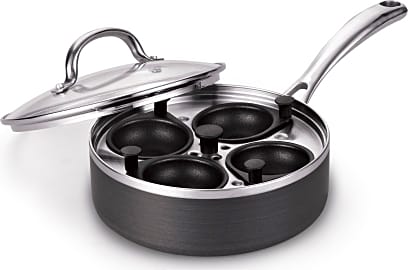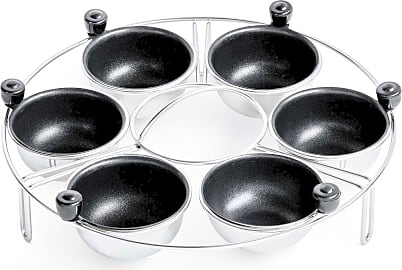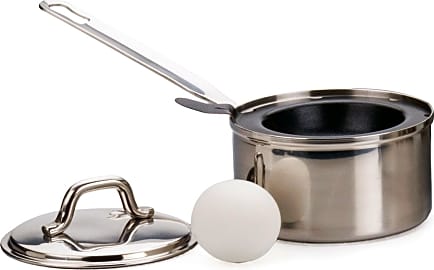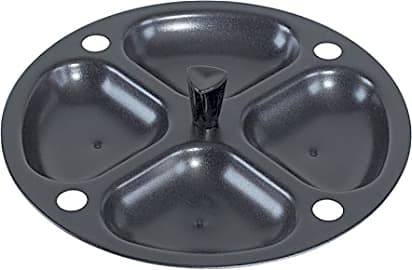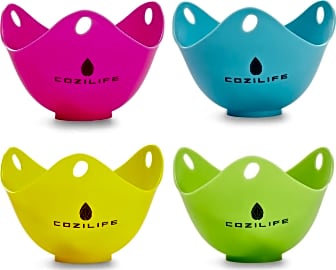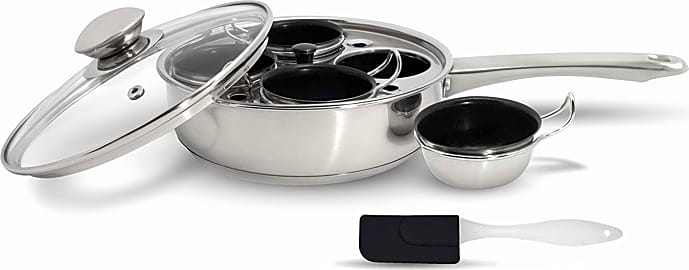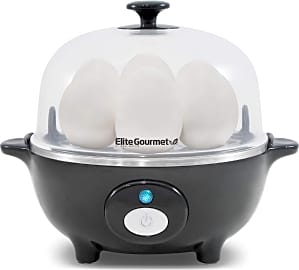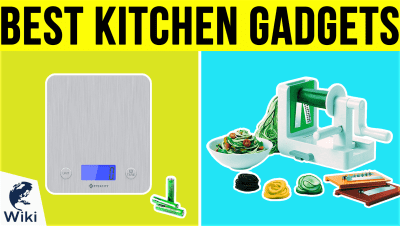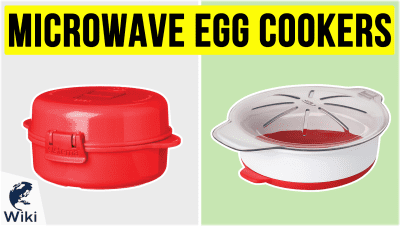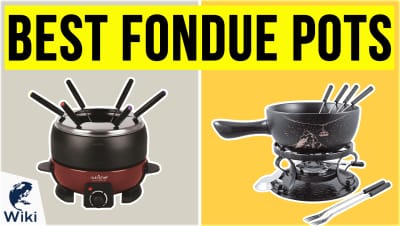The 10 Best Egg Poachers

This wiki has been updated 40 times since it was first published in April of 2015. However you prefer your eggs, many believe that poaching is a healthier alternative to frying, although getting it right can be a difficult skill to master. Any one of these convenient devices will help you make your way up the learning curve to perfect results in no time. Some allow for other methods of preparation, as well, so you can get creative and vary your morning meal routine. When users buy our independently chosen editorial recommendations, we may earn commissions to help fund the Wiki.
Editor's Notes
November 24, 2020:
After some consideration, we've removed the Krups 7-Egg because it doesn't offer an automatic shut-off function. Most other electric options, including the popular Dash Deluxe Rapid Cooker, do offer such a feature. Considering that the Krups model is more expensive than most by quite a large margin, this seems like an especially frustrating oversight.
As for non-electric choices, we added the Kitchencraft Stainless Steel on the strength of its induction compatibility. It cooks only two eggs at one go, however, so if you have a lot of hungry mouths to feed, it may not be your best bet. The same can be said of the diminutive RSVP Endurance Single Set, too. For large groups, consider instead the Eggssentials Nonstick or the Cooks Standard 8-Inch.
Lastly, we have included two silicone options for those who aren't looking to invest in another large pan or electronic kitchen gadget. These are the Oxo Good Grips Silicone and the Cozilife Cups. The cups are perhaps the more versatile choice, since you can use them in a pan of boiling water or as a microwave egg cooker, but they can take a little getting used to as you adjust cooking times and water levels.
December 06, 2019:
Although technically a poached egg should cook directly in water and not a cup, or else it is considered a coddled egg, we have included a range of both "in the water" and "cup" options. The difference is minimal and most at-home cooks use the terms and methods interchangeably. But no matter the terminology, it's tough to top the Dash Deluxe Rapid Cooker, a type of egg steamer that offers a variety of cooking methods. For instance, it comes with both boiling and poaching trays, so you aren't locked into the same kind of breakfast every morning. And it isn't too pricey considering the functionality, a nice plus.
If you'd prefer a non-electric choice, there's the Cooks Standard 8-Inch, a pan with cups that can be removed individually. It is similar to the Norpro 10-Inch, which we have removed at this time due to occasional issues with the lid. If you already have a good pan, you might consider the Nordic Ware Insert or the Winkeyes Cups instead. And for purists who want their eggs to cook directly in boiling water, we've added the Oxo Good Grips Silicone. It looks something like an hourglass and keeps each egg from floating and expanding as it cooks.
Special Honors
Calphalon Elite 8-Cup With the Calphalon Elite 8-Cup, you'll receive eight tiny baskets that hold one egg each, along with a 6-quart sauteuse that will come in handy for making all kinds of meals. And that's a good thing, because this model is quite a bit more expensive than most other run-of-the-mill egg poachers. williams-sonoma.com
How To Use An Egg Poacher
Put the entire unit on the stove, and turn a burner on high until the water boils.
Before egg poachers came to be, making this dish was quite complicated. Without a special device, eggs are poached by cracking an egg and dropping it into a pan of simmering, swirling water. This process, however, can be rather messy. Your yolk can break entirely when you crack the shell, and you can end up with a big blob of eggs in the pan. It can also be hard to remove the finished poached eggs from the pan without breaking the yolk. An egg poacher eliminates these issues. Because egg poachers use steam to cook the eggs, you don't have to fish your finished product out of the water. An egg poacher also has individual cups for each egg so that they won't stick together.
Egg poachers are usually comprised of a regular pan and a plate that houses the egg cups. To poach your eggs, you remove the egg cup plate and fill the bottom pan with just enough water to touch the bottom of the egg cups. It's usually a good idea to brush oil or butter inside of each egg cup as well, so your eggs don't stick. Break an egg inside of each little cup, and place it back inside of the pan. Put the entire unit on the stove, and turn a burner on high until the water boils. You only want the water at a simmering boil; if it's any less than that, the whites will separate from the yolks, but if it's any more than that the eggs can break apart entirely.
Once your water is boiling, you can put a lid over the pan, and bring the heat down to medium. Cook the eggs for two and a half to three minutes. Those who prefer harder yolks can cook their eggs for one more minute. Runny yolk fans can rejoice, though, because reports say that these are safe to eat. When the eggs are done, use oven mitts or tongs to remove the egg cups. The eggs should slide easily out of the pan and onto a plate.
Special Features To Look For
Egg poachers that are lined on the outside with stainless steel will be the easiest to clean, and incredibly durable. As for the inside, you can find egg cups that are made with the same non-stick Teflon you find in full non-stick pans. These are ideal for people who want to reduce their butter and oil usage. Some egg poachers have egg cup trays with small handles on each individual cup, which makes it easy to lift your eggs out. For the best heat conduction, look for a pan made from anodized aluminum--this is more durable than regular aluminum.
There are a few egg poachers that are capable of making other complicated egg dishes, like the omelet. If you're also struggling to master the omelet, save yourself the trouble and buy a poacher with an omelet tray. These more advanced devices usually have built-in timers, too, and let you know the second your dish is done. This is very helpful since overcooking eggs by just half a minute can ruin their consistency.
Make sure your lid and your pan have a heat-resistant handle so you don't burn yourself when removing it from the stove. To get the most out of your egg poacher, make sure the skillet beneath the egg cups has properties you like, such as a large, non-stick surface. This way you can remove the egg cups and use the pan to make other dishes.
The History Of Eggs As Food
Birds have existed on this planet since long before humankind came to be. Historians believe that the first birds that humans retrieved eggs from for consumption were a jungle species. In East India, people domesticated jungle fowl as early as 3200 BCE. But at the time, people would save most of the eggs for hatching, in order to keep the fowl population alive. Chinese and Egyptian societies in 1400 BCE also domesticated fowls and ate their eggs. Each society has favored different types of bird eggs; the Chinese were originally most fond of pigeon eggs, ancient Romans ate peafowl eggs, and the Phoenicians used to eat ostrich eggs.
In East India, people domesticated jungle fowl as early as 3200 BCE.
The Ancient Romans and Egyptians are thought to be the first to use eggs in baking because they discovered the food's binding properties. Roman nobles would be served dozens of varieties of bread and pastry that all called for eggs, and a recipe found for one of their ancient sacrificial cakes calls for an egg. The wealthy Roman merchant Marcus Gavius Apicius was allegedly the first to use eggs to make a custard.
While hen eggs have become the most common today, there are still various other delectable varieties available in stores. The choice to sell eggs by the dozen comes from an old system of measurements. In the 1800s in England, one shilling equaled 12 pennies. So people could either by an egg for a penny or a dozen for a shilling.



